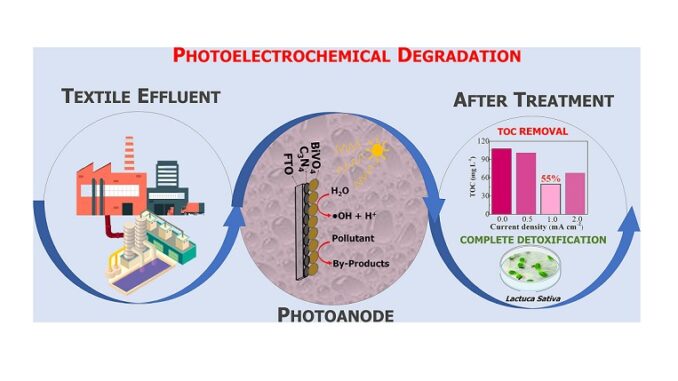
Light-activated materials perform well in treatment of textile effluent
Photoelectrochemical processes have been considered sustainable alternatives for the remediation of water contaminated by domestic or industrial effluents. Simply put, the strategy consists of using solar energy to degrade organic pollutants.
In an article published in the journal Chemosphere, researchers in Brazil describe the synthesis of several different semiconductor materials that can be used as photoanodes.
Photoanodes are the medium for the photogeneration of electrons to produce an electric current in photoelectrochemical systems. The article also describes the use of one of these materials to remove toxic substances, such as dyes, from real-world effluent produced by the textile industry.
The researchers are affiliated with the Center for Development of Functional Materials (CDMF) and the Center for Innovation in New Energies (CINE).
In the study, the researchers synthesized semiconductors comprising carbon nitride (C3N4) and bismuth vanadate (BiVO4).
Bismuth vanadate, associated with the use of solar energy, removed toxic substances efficiently with low electricity consumption. The results suggest that the material, which is inexpensive and easy to produce, has potential applications in industry, especially to treat wastewater from textile mills. Production of the material can be combined with the generation of hydrogen, which in turn can be used to produce electricity.
More information: Isabelle M.D. Gonzaga et al, Efficient photoelectrochemical real textile wastewater detoxification using photoanodes of C3N4–BiVO4, Chemosphere (2024). DOI: 10.1016/j.chemosphere.2024.141315

